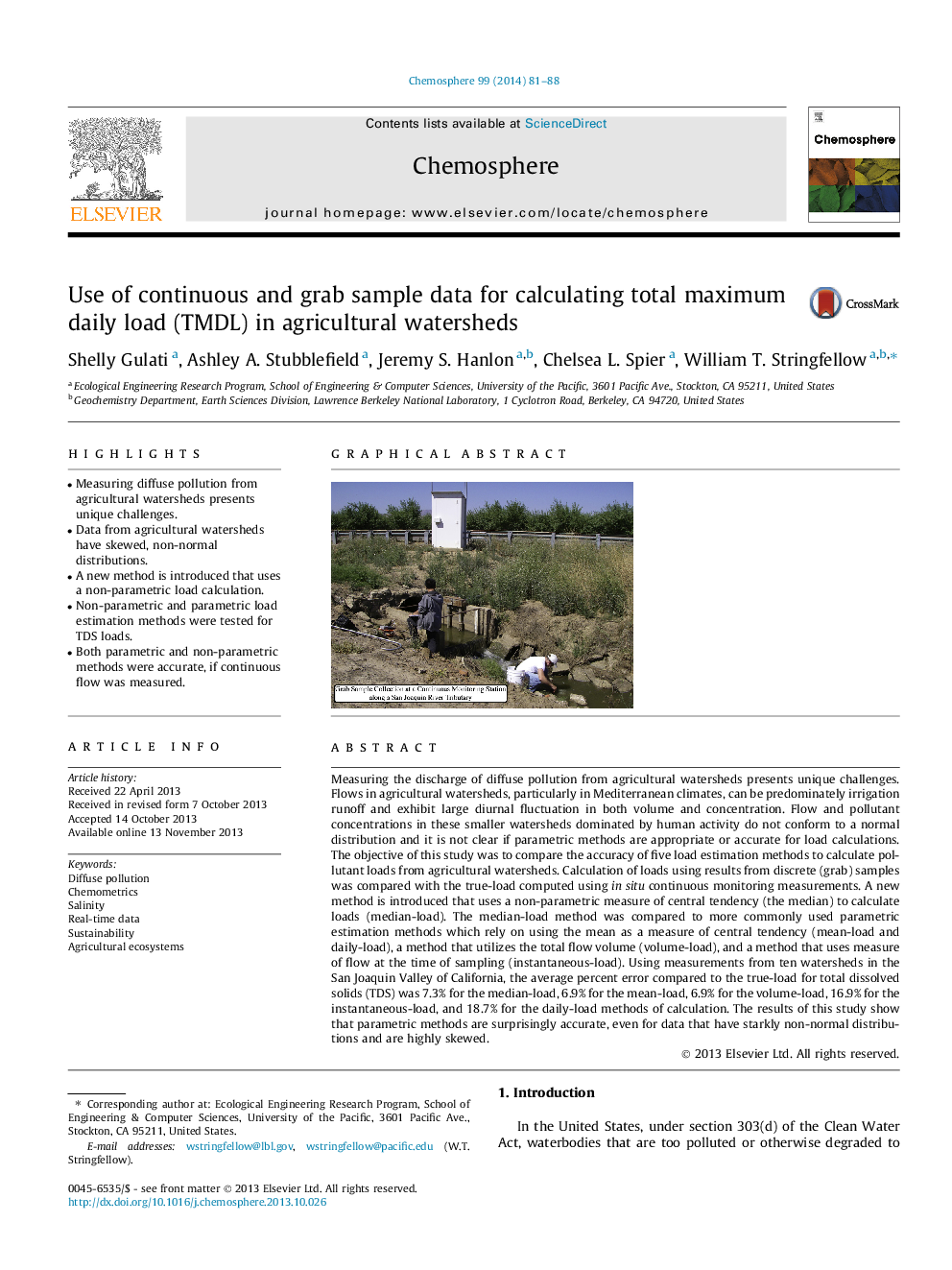| کد مقاله | کد نشریه | سال انتشار | مقاله انگلیسی | نسخه تمام متن |
|---|---|---|---|---|
| 4408929 | 1618872 | 2014 | 8 صفحه PDF | دانلود رایگان |

• Measuring diffuse pollution from agricultural watersheds presents unique challenges.
• Data from agricultural watersheds have skewed, non-normal distributions.
• A new method is introduced that uses a non-parametric load calculation.
• Non-parametric and parametric load estimation methods were tested for TDS loads.
• Both parametric and non-parametric methods were accurate, if continuous flow was measured.
Measuring the discharge of diffuse pollution from agricultural watersheds presents unique challenges. Flows in agricultural watersheds, particularly in Mediterranean climates, can be predominately irrigation runoff and exhibit large diurnal fluctuation in both volume and concentration. Flow and pollutant concentrations in these smaller watersheds dominated by human activity do not conform to a normal distribution and it is not clear if parametric methods are appropriate or accurate for load calculations. The objective of this study was to compare the accuracy of five load estimation methods to calculate pollutant loads from agricultural watersheds. Calculation of loads using results from discrete (grab) samples was compared with the true-load computed using in situ continuous monitoring measurements. A new method is introduced that uses a non-parametric measure of central tendency (the median) to calculate loads (median-load). The median-load method was compared to more commonly used parametric estimation methods which rely on using the mean as a measure of central tendency (mean-load and daily-load), a method that utilizes the total flow volume (volume-load), and a method that uses measure of flow at the time of sampling (instantaneous-load). Using measurements from ten watersheds in the San Joaquin Valley of California, the average percent error compared to the true-load for total dissolved solids (TDS) was 7.3% for the median-load, 6.9% for the mean-load, 6.9% for the volume-load, 16.9% for the instantaneous-load, and 18.7% for the daily-load methods of calculation. The results of this study show that parametric methods are surprisingly accurate, even for data that have starkly non-normal distributions and are highly skewed.
Figure optionsDownload as PowerPoint slide
Journal: Chemosphere - Volume 99, March 2014, Pages 81–88